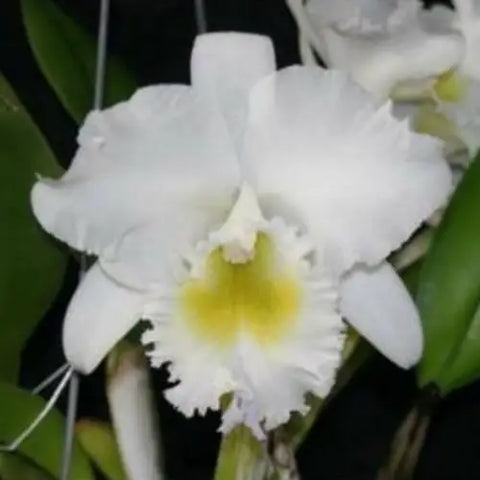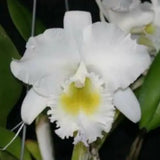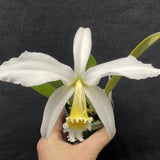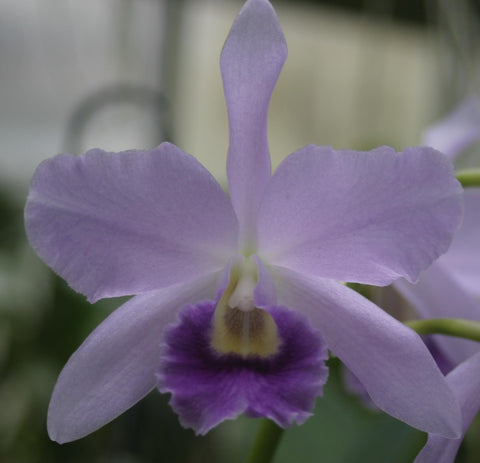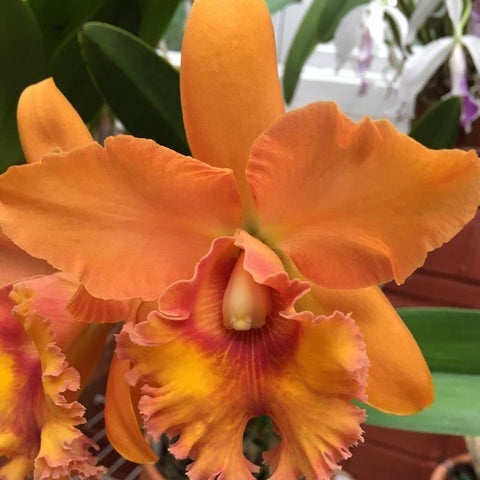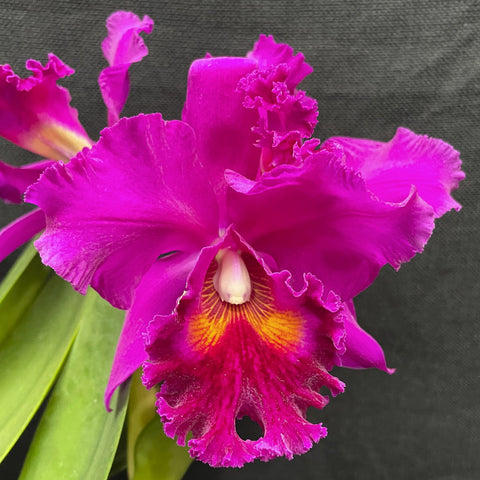Bc. (Pastoral 'Innocence' AM/AOS x L. jongheana) – 2.5" Pot
Bc. (Pastoral 'Innocence' AM/AOS x L. jongheana) – 2.5" Pot
Fragrant, Winter-Blooming Hybrid with Award-Winning Lineage
Brassocattleya (Bc.) Pastoral 'Innocence' AM/AOS × Laelia jongheana is a captivating cross that blends the best of classic and rare orchid genetics. Registered by Waldor Orchids, this hybrid brings together the stately, white, award-winning blooms of Pastoral ‘Innocence’ with the soft-colored, sweetly fragrant charm of Laelia jongheana, a prized Brazilian species.
The resulting flowers are large and elegant, typically opening in winter with variations of white, pink, or lavender. Broad, sometimes ruffled petals frame a flared lip with gentle color from the L. jongheana parent. Every seedling is unique, offering collectors a chance to grow a one-of-a-kind bloom.
This plant is currently in a 2.5" pot, approximately 2–3 years from blooming size.
Why Growers Love Bc. (Pastoral 'Innocence' x L. jongheana)
Growers love this hybrid for its strong fragrance, show-stopping size, and genetic prestige. Pastoral ‘Innocence’ is known for producing dependable, classic white flowers that often earn awards for form and balance. L. jongheana, on the other hand, contributes compact growth and a delightful pastel palette. When combined, they create a winter-blooming orchid that is both bold and elegant.
This hybrid is ideal for home growers thanks to its moderate size and predictable care requirements. It brings color and fragrance to the dull winter months and rewards patient care with spectacular blooms and variation from plant to plant.
Plant Details:
-
Full Name: Brassocattleya (Pastoral 'Innocence' AM/AOS × Laelia jongheana)
-
Pot Size: 2.5"
-
Growth Stage: 2–3 Years to Blooming Size
-
Expected Bloom Season: Primarily Winter
-
Bloom Size: Large, broad-petaled flowers with variable color
-
Fragrance: Yes – sweet and floral
-
Growth Habit: Compact pseudobulbs with leathery leaves
-
Light Needs: Bright, indirect light
Cattleya Culture
Light:
Light is the most important factor for growing and blooming cattleyas. They love bright light—but not harsh, direct sun in the middle of the day. In your home, an east-facing window is ideal, or a shaded south or west window (use a sheer curtain if needed). In a greenhouse, aim for 50–70% full sun (about 3,000 to 5,000 foot-candles). A healthy Cattleya should have medium green leaves and stand upright without needing a stake.
Temperature:
Cattleyas like it warm during the day—about 70–85°F—and cooler at night—around 55–60°F. Seedlings do best with slightly warmer nights. A day/night difference of 15–20 degrees helps trigger blooming. They can handle up to 95°F if humidity and airflow are increased.
Watering & Humidity:
Watering depends on your pot size, media, temperature, and light levels. Mature plants need to dry out completely before the next watering. Seedlings prefer a bit more moisture. You can tell when it’s time to water by lifting the pot—light means dry, heavy means wet. When in doubt, wait a day. Never use water below 50°F, and avoid softened water with added salts.
Cattleyas enjoy humidity between 50–80%. At home, use a humidity tray with pebbles and make sure your pot doesn’t sit in the water. Airflow is key—moving air helps prevent disease. In greenhouses, use humidifiers or evaporative coolers to maintain proper moisture in the air.
Fertilizing:
Feed your cattleyas regularly. If you're growing in fir bark, use a high-nitrogen formula like 30-10-10. Otherwise, use a balanced fertilizer. During active growth, fertilize every two weeks. When growth slows, switch to once a month. You can also feed lightly (at ¼ strength) every time you water. Once a month, flush with plain water to wash out any salt buildup.
Repotting:
Repot every 2–3 years or when you see roots creeping over the edge or the potting mix breaks down. The best time to repot is right after blooming or in spring—just before new roots start to grow. Use coarser mix for mature plants, finer mix for young ones. Only divide a plant if it has at least 6 pseudobulbs. Each division should have 3–5 healthy bulbs. Pick a pot that allows for two years of new growth.
To repot:
-
Place fresh mix against one side of the new pot.
-
Trim any dead roots.
-
Lay the healthy roots on the mix with the cut rhizome against the pot wall.
-
Fill in and firm the mix around the roots.
-
Stake if needed.
-
Keep humid and shaded until you see new root growth.
We Also Recommend

